Of all the rules on our roads, there aren’t many that generate as much discussion and confusion as roundabouts.
Roundabouts continue to spring up all around us – at intersections both big and small, on major roads and in local traffic areas.
Roundabouts can create a safer and more efficient traffic flow, but drivers can often be confused about how to correctly tackle one.
Most of the confusion centres on when it’s necessary to indicate entry to and exit from a roundabout. That confusion escalates according to the size and complexity of the roundabout, particularly where there is more than one lane of traffic travelling in the same direction.
So, let’s try to clear up some of the misunderstandings.
Firstly, what exactly defines a roundabout? According to the Road Traffic Code 2000 (WA), a roundabout is an intersection with: (a) one or more marked lanes, all of which are for the use of vehicles travelling in the same direction around a central traffic island; or (b) room for one or more lines of traffic travelling in the same direction around a central traffic island.
Sometimes roundabouts have a sign that looks like a ‘recycling’ symbol, but even when there is no sign, they are easy enough to identify and apply the correct rules to.
Entering and exiting
Probably the most important rule is that you must always give way to vehicles already on the roundabout. You should also only enter when there is an adequate and safe gap in the traffic, and of course always travel in a clockwise direction around the island.
Unlike in some countries, vehicles approaching from the right do not have right of way if they have not yet entered the roundabout - such vehicles are required to give way to you if you enter the roundabout first. However, you should always use caution when entering a roundabout, even if you have right of way, in case another driver has not seen you or falsely believes that they have right of way. Take particular care if another vehicle is approaching the roundabout at a high speed and doesn't appear to be slowing down.
The other basic rule is that you must signal to other drivers that you’re about to leave the roundabout if it is feasible to do so. Failing to indicate, particularly at larger roundabouts, can not only create confusion and uncertainty for other road users but can also contribute to significant delays. So whether you're turning left, going straight, or turning right, use your left indicator to signal that you are exiting just before your exit point.
So those are the ins and outs, now on to what happens in between.
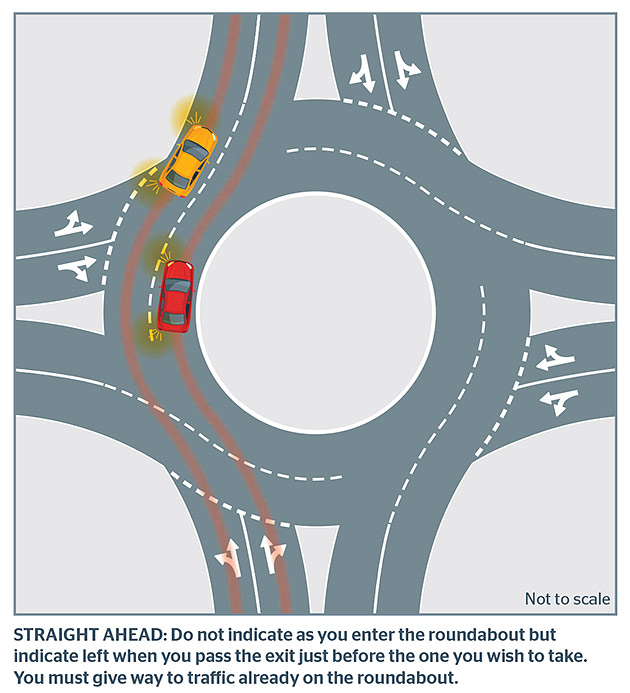
Single-lane roundabouts
The most common type of roundabout is an island at the intersection of two roads with a single lane of traffic in each direction. Here, there are four entry or exit points.
If you’re leaving at the first exit and it’s less than halfway around, you indicate a left turn before you enter and keep indicating left until you exit.
If you’re continuing straight ahead or reasonably straight ahead along the road on which you entered the roundabout from, don’t indicate as you enter the roundabout but ideally you should indicate a left turn just before you exit. Indicate your left turn as you pass the exit just prior to the one you’re exiting from.
If you’re turning right - so exiting after the halfway point - indicate a right turn before you enter the roundabout and continue to indicate while you're in the roundabout. Then as you pass the exit just prior to the one you’re exiting from, indicate left.
Not enough time? It’s true that on smaller, single-lane roundabouts you only travel a short distance between one exit and the next, but even a short signal from you is important as it lets any following traffic know where you’re going. So, if feasible, you should indicate.
However, when using mini-roundabouts, there is typically not enough time to indicate separate directions when joining and leaving the roundabout, in which case you should prioritise indicating the direction of your exit when joining the roundabout.
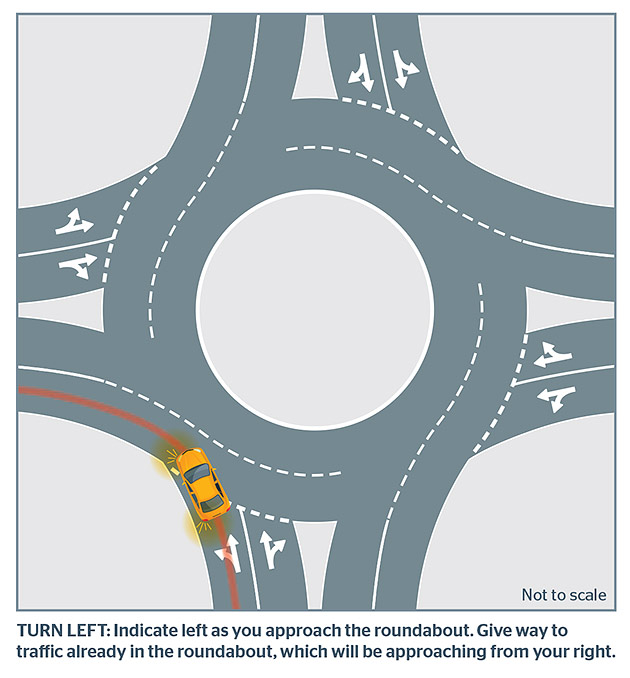
Three or more exits
What about on a three-exit roundabout, or where there are more exit points? The key here is thinking about the midway point in the roundabout. If you’re taking the first exit and it is before the halfway mark on the roundabout, then indicate a left turn as you approach the roundabout and keep indicating left until you exit.
If you're exiting between the first exit and the halfway mark, or going straight ahead, indicate left as you pass the exit just prior to the one you're exiting from.
When taking any exit after the halfway point, indicate a right turn as you enter the roundabout and then indicate left as you pass the exit that is just prior to your exit point.
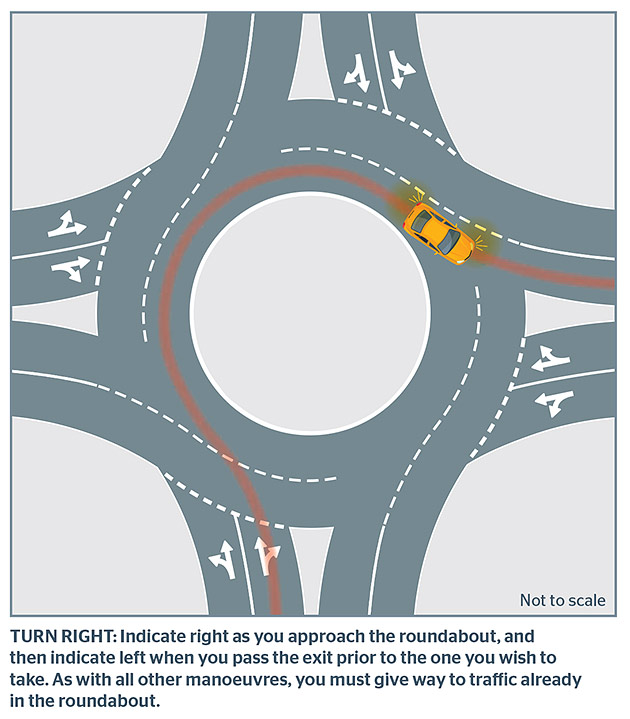
Multi-lane roundabouts
You need to think ahead before entering a roundabout where there are two or more lanes of traffic going in the same direction, but the same rules apply as to when you need to indicate on entering and exiting. Where arrows are marked on the road to show the direction of traffic, obey the direction of the arrows.
If there are no arrows marked on the road, you should enter the roundabout in the left lane if you’re exiting less than halfway around, or enter in the right lane if you’re exiting more than halfway around. If you're exiting half way around, you can enter in any lane.
If you do need to change lanes once you’ve entered a multi-lane roundabout, wait until it's safe then signal a move into the correct lane. From there, you must indicate your exit as you would on any roundabout.
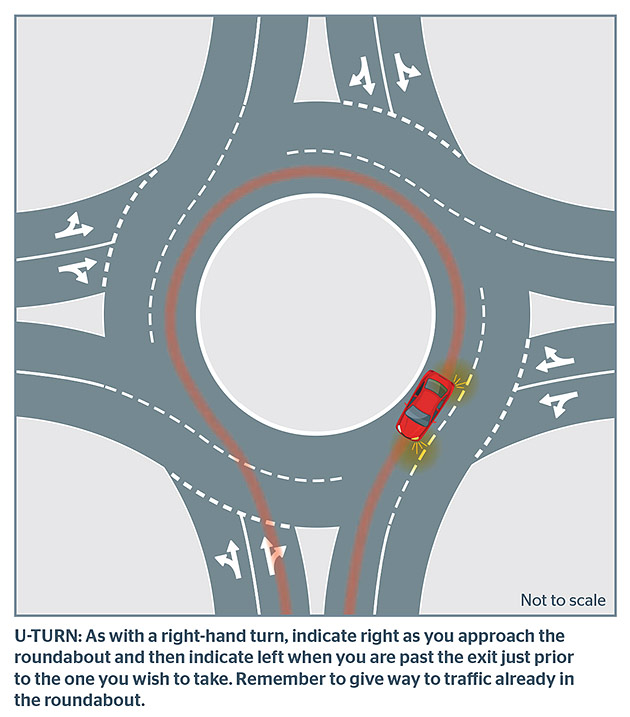
If there are an odd number of exits, how do I know where the ‘halfway’ point is?
The ‘halfway’ point on a roundabout is the road that is straight ahead, or substantially straight ahead, of the road on which you enter the roundabout. In the Road Traffic Code 2000 (WA), “a driver leaves a roundabout halfway around the roundabout if the driver leaves the roundabout on a carriageway that is straight ahead, or substantially straight ahead, of the carriageway on which the driver enters the roundabout.”
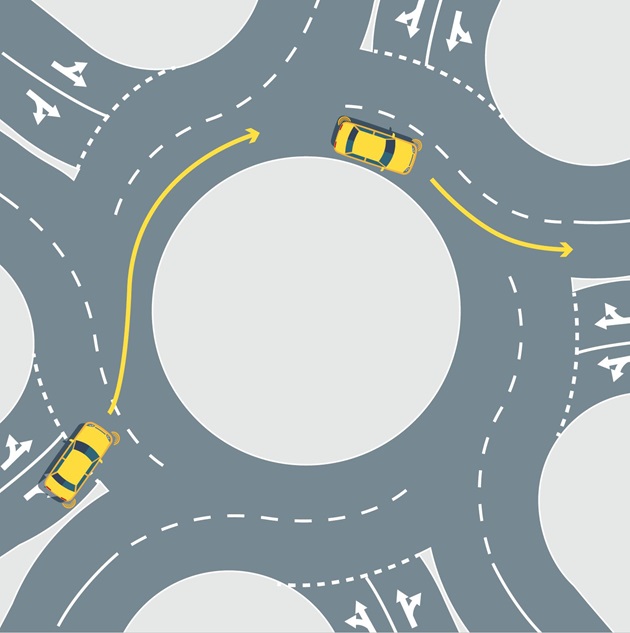
and then indicate left when you reach a part of the road which is substantially straight ahead.
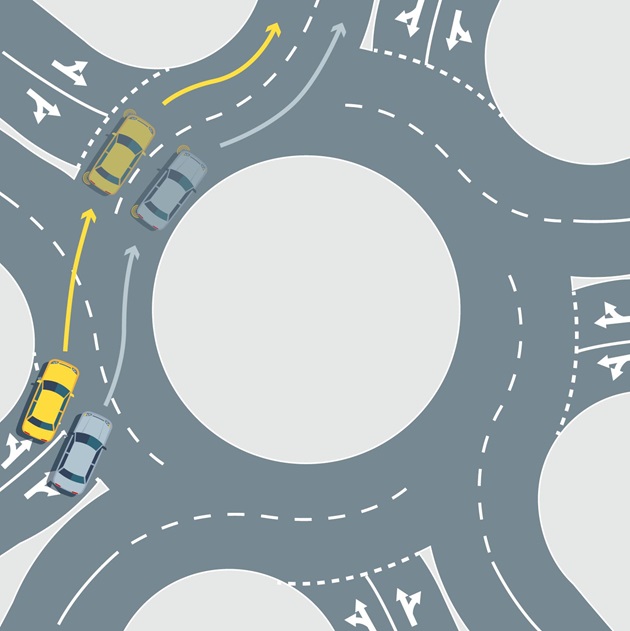
enter the roundabout and then indicate left once you have passed the first exit.
Roundabout penalties
Failing to give way at a roundabout: Three demerit points and $150 fine.
Most other offences for not correctly using a roundabout: Two demerit points and $100 fine.
Roundabout and bicycles
Here are some of the rules that cover how cyclists and motorists should use roundabouts together:
Even if cyclists are exiting more than halfway around the roundabout, they may enter the roundabout in any lane, irrespective of whether or not the lane is marked by lines or arrows which vehicles must follow.
Both drivers and cyclists must give way to those who are already in the roundabout. That is, drivers must give way to cyclists already in the roundabout, and cyclists must give way to drivers already in the roundabout.
Cyclists who are riding in the far-left marked lane of a roundabout with two or more marked lanes, or the far-left line of traffic in a roundabout with two or more lines of traffic, must give way to any vehicle leaving the roundabout.
When travelling behind cyclists (including at roundabouts), drivers must keep enough distance to ensure they will be able to stop safely in an emergency, without the risk of rear-ending the cyclist.
Drivers passing to the right of cyclists travelling on a road in the same direction as the vehicle must pass the bicycle at a safe distance, including at roundabouts. If the speed limit applicable to the length of road is 60km/h or less, the driver must keep a lateral distance of at least 1m. If the speed limit is more than 60 km/h, drivers must allow at least 1.5m.
Get going with RAC Go Change your backseat driver for a better one. Download RAC Go, the app designed to help you monitor and improve your driving behaviour with fun challenges. And it’s free!
Last updated: March 2022
